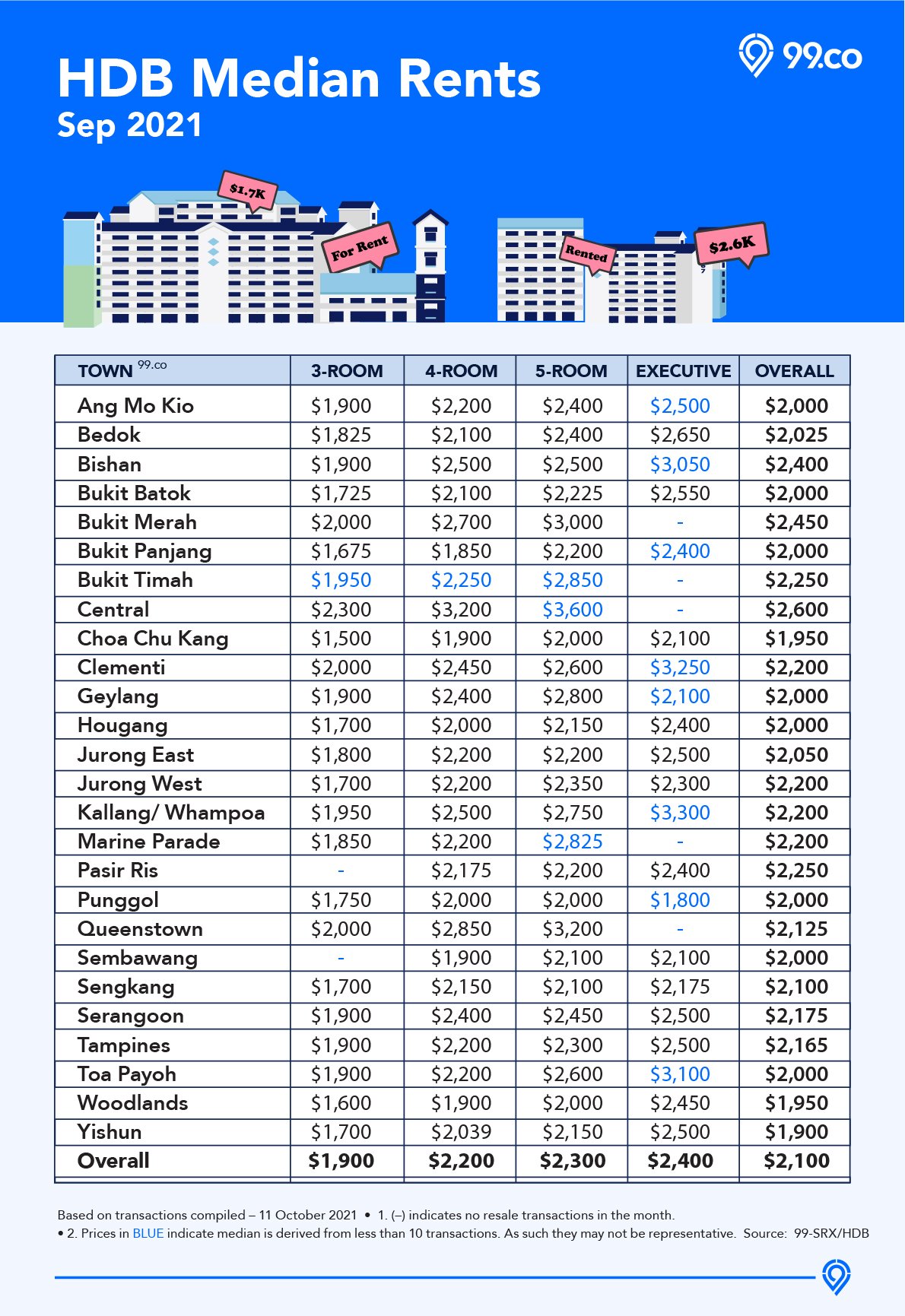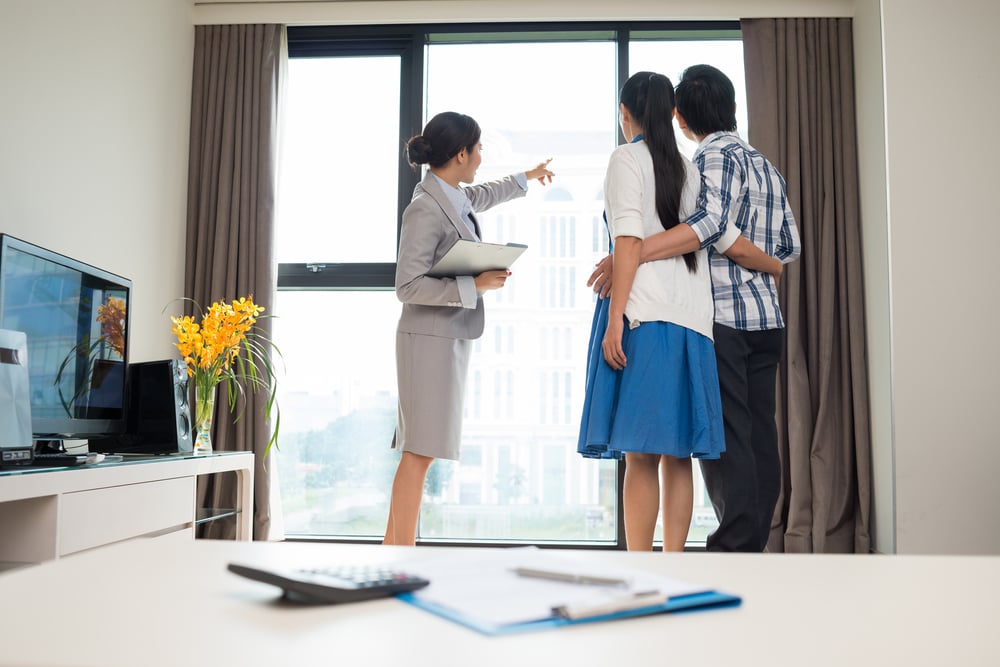Keen on renting out your HDB flat to earn passive income? Before you publicise your bedroom or flat for rent, here are some key guidelines you should know.
1. Check your eligibility
You must be a Singapore Citizen to be able to rent out your entire HDB flat. SPRs are not permitted to do so, but may rent out bedrooms in the flat.
Bedroom rentals are only permitted if you own a flat that is 3-room or bigger. Plus, you may rent out your flat only after fulfilling the five-year minimum occupation period (MOP). (There have been exceptions though, for example if you work overseas. You can read more about it here.)
The minimum rental period for each tenant must be six months. This applies to both private property and HDB flats.
Ensure that you follow the regulations as the HDB does conduct regular checks to take action against unauthorised rentals and actively investigates suspected cases.
2. Check who you can rent to and how many tenants you can have
Tenants who are not Singapore Citizens (SC) or Permanent Residents (SPR) must possess any of the following passes: Employment Pass, S Pass, Work Permit, Student Pass, Dependant Pass, or Long-Term Social Visit Pass. (Remember: Tourists are not permitted to rent HDB flats.) It is recommended that you check such documentation during the rental process.
While there’s no racial quota (unlike buying an HDB flat), do note the Non-Citizen Quota for Renting Out of Flat. This applies if your tenant is a non-citizen and non-Malaysian, i.e. PRs and foreigners. You may use HDB’s e-Service to check if you can rent out your flat to them.
There’s also a limit on the number of tenants you can have in the HDB flat you’re renting out.
| Flat type | Total number of tenants |
| 1-room and 2-room | 4 |
| 3-room and bigger | 6 |
If you’re renting out your bedrooms, there’s also a limit on the number of rooms you can rent out and tenants in each flat.
| Flat type | Max number of bedrooms that can be rented out | Max number of occupants* in each flat |
| 3-room | 1 | 6 |
| 4-room and bigger | 2 | 6 |
*The occupants include owners, authorised occupiers and tenants.
3. Set the rental price
Start by taking a look at the median rent of flats published by HDB or this infographic by us:

You can also do a quick search of HDBs for rent on our portal to see how much you should set for the rental price.
In addition, consider other factors such as the furniture provided and if the utility bill is included.
4. Decide to engage an agent or not
Take this time to plan and prepare how you would like to manage the leasing process. Decide if you would like to engage a property agent. There are pros and cons to hiring an agent. On one hand, you save on the property agent commission if you don’t engage one.
You can go the “D-I-Y” route by sharing on your Instagram stories, Facebook posts or by word-of-mouth. Or save time scratching your head by engaging an expert for help. Engaging a property agent can help you save time marketing your HDB for rent.
5. Arrange for meetings and viewings
It’s time to start ‘swiping left or right’ on your prospective tenants as you meet them (and their agents) in the flesh, for viewing appointments.
Viewings typically take between 15 to 30 minutes, during which the potential tenant may ask you a number of questions about the property, furnishing, your expected rental prices. So it’s wise to prepare yourself for these and other possible queries that may arise.

While you’re preparing for the viewings, consider the qualities you’re looking for in a potential tenant, such as reliability and trustworthiness. Use the viewing as an opportunity to get to know them better. So that you have an idea of what their lifestyle is like and how it may affect their suitability as a tenant.
For example, would they be likely to throw wild parties that could be a liability to the property, or are they generally mindful and considerate? These may be some of your considerations when looking for a tenant.
6. Start negotiating
Once you have a few tenants vying to rent your HDB room or flat, it’s time to put your cards on the table and discuss the terms of the deal.
Negotiate the tenant’s expectations, such as whether they would like the flat to be renovated or repainted, how much furnishing to include in the agreement, as well as the price that they pitch to you.
Following that, once you have mutually agreed on the terms of the deal, the tenant would usually issue a Letter of Intent (LOI). This is a brief formal document stating their intention to rent your property and stipulating the terms that both parties have verbally agreed upon.
While the LOI is optional, it is used especially when the rental period is a year or longer. The LOI would be accompanied by the good faith deposit. This deposit is mandatory, and is usually the price of a month’s rent payment. The tenant pays this to secure the deal.
7. Apply for HDB’s approval
It’s mandatory that you get approval from HDB when renting out your flat or bedroom before the tenancy period commences. You can submit your application via My HDBPage or the Mobile@HDB app (available for iOS and Android).
You must notify HDB if there are any changes in the rental within seven days. These include changes in your tenants’ particulars, or if the rental is terminated.
8. Prepare and sign the Tenancy Agreement
The final stage of the deal is signing the Tenancy Agreement (TA). This is a crucial document to pay attention to. It is a contract produced by the landlord (or the landlord’s agent) specifying the terms and conditions of the rental.
It’s also when you collect the security deposit, which is used to cover any damages other than those caused by wear and tear. If you have collected the good faith deposit previously, this usually becomes the security deposit.
Afterwards, get your tenant to stamp the tenancy agreement. This can be done via the IRAS e-Stamping Portal.
9. Pass the keys to your tenants
Before you hand over your keys to your tenants, prepare an inventory list for you and your tenant of all the furniture and appliances in the HDB flat you’re renting out. You may also want to take pictures of your place as a way of recording the state of your house before you rent it out. This can come in useful should you have any rental disputes.
Do a final walk-through with your tenant and you’re ready to hand over the keys to them. But it’s not hands-off for you yet!
There would usually be a “30-day problem free period” clause in the LOI and TA stating that within this period, the tenant has the right to alert the landlord to any defects in the property. As the landlord, you would be liable to any cost to do with the repair or replacement of the said problems during this period.
What’s your experience of renting out your HDB flat like? Let us know in the comments section below or on our Facebook post.
If you found this article helpful, 99.co recommends Here’s why renting in Singapore isn’t as expensive as you think and Diversity-Friendly Property Rentals In Singapore.
Looking for a property? Find the home of your dreams today on Singapore’s fastest-growing property portal 99.co! If you would like to estimate the potential value of your property, check out 99.co’s Property Value Tool for free. Meanwhile, if you have an interesting property-related story to share with us, drop us a message here — and we’ll review it and get back to you.
Frequently asked questions
Is it illegal to rent out HDB?
No, if you meet the eligibility criteria. For instance, only Singapore citizens can rent out the whole HDB flat. Singapore citizens and PRs can rent out their bedrooms if their flat is a 3-room or bigger.
Can you rent out your HDB before the MOP?
Typically, you cannot rent out the whole unit before the five-year MOP. But there have been exceptions, e.g. you work overseas.
Can you rent out your BTO?
You’ll have to fulfil the five-year MOP first before you can rent out the whole BTO. However, you can rent out the bedroom(s) within the MOP.
The post A step-by-step guide to renting out your HDB flat appeared first on 99.co.

